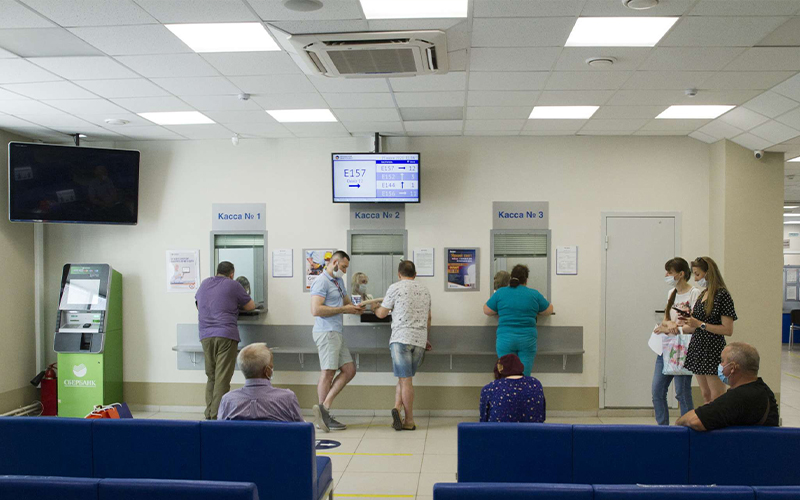Touchscreens are widely used in public information terminals, covering multiple fields such as government affairs, healthcare, transportation, and culture. Here are some key application scenarios:
Government Services:
Government Service Halls: Touchscreens are used in self-service government service terminals. Citizens can use touchscreens to read ID card information, perform facial recognition verification, scan and upload documents, fill out and print forms, etc., enabling self-service processing of some services. Simultaneously, information display touchscreen kiosks can play notices, announcements, and policy interpretations, while smart wayfinding touchscreen kiosks provide services such as map navigation, department layout, and window guidance.
Community Centers: Touchscreen kiosks can display public information such as weather, traffic, and news, and also provide community affairs handling guides, event notices, etc., making it convenient for residents to access information and handle related matters.
Healthcare:
Hospitals: Touchscreen query kiosks are used to display doctor schedules, medical service information, registration procedures, etc., helping patients quickly understand hospital procedures and related medical information. In addition, some hospitals are also equipped with self-service payment machines, report printers, and other terminal equipment, allowing patients to complete payments, print test reports, etc., through touchscreen operation, reducing waiting time.

Transportation Sector:
Airports, train stations, subway stations, and other transportation hubs: Touchscreens are used in self-service ticket machines, information query terminals, and other equipment. Passengers can use touchscreens to purchase tickets, check train and flight information, view refund guidelines, and find transportation routes. Additionally, some vehicles use touchscreen displays, allowing drivers to control various vehicle functions such as door opening/closing and station announcements.
Bus Stations: Some cities have installed smart electronic bus stop signs. Passengers can use touchscreens to check bus routes, real-time arrival information, and transfer options, facilitating travel planning.

Commercial Services Sector:
Shopping Malls: Touchscreen kiosks are commonly used for information navigation, merchant introductions, and event information dissemination. Customers can use kiosks to learn about mall layouts, store locations, and promotional activities, enhancing their shopping experience.
Hotels: Touchscreen kiosks are used for room service information, nearby tourist information, and online booking. Guests can use kiosks to learn about the hotel's dining and entertainment facilities, find nearby attractions and restaurants, and make online reservations.
In the cultural and educational fields:
Libraries: Touchscreen kiosks can be used for book retrieval, borrowing information inquiry, and viewing event notices. Readers can quickly find the books they need, check borrowing status, and access information about various library activities simply by touching the screen.
Museums and exhibition halls: Touchscreen kiosks display exhibit descriptions, exhibition layouts, and guide information, helping visitors better understand the exhibition content and tour routes. They can also provide virtual tours and interactive experiences, enhancing the enjoyment and educational value of the visit.
Schools: Touchscreen kiosks can display campus notices, course schedules, and teacher information. They can also function as electronic class signs displaying class schedules and student work, facilitating information access for teachers and students.